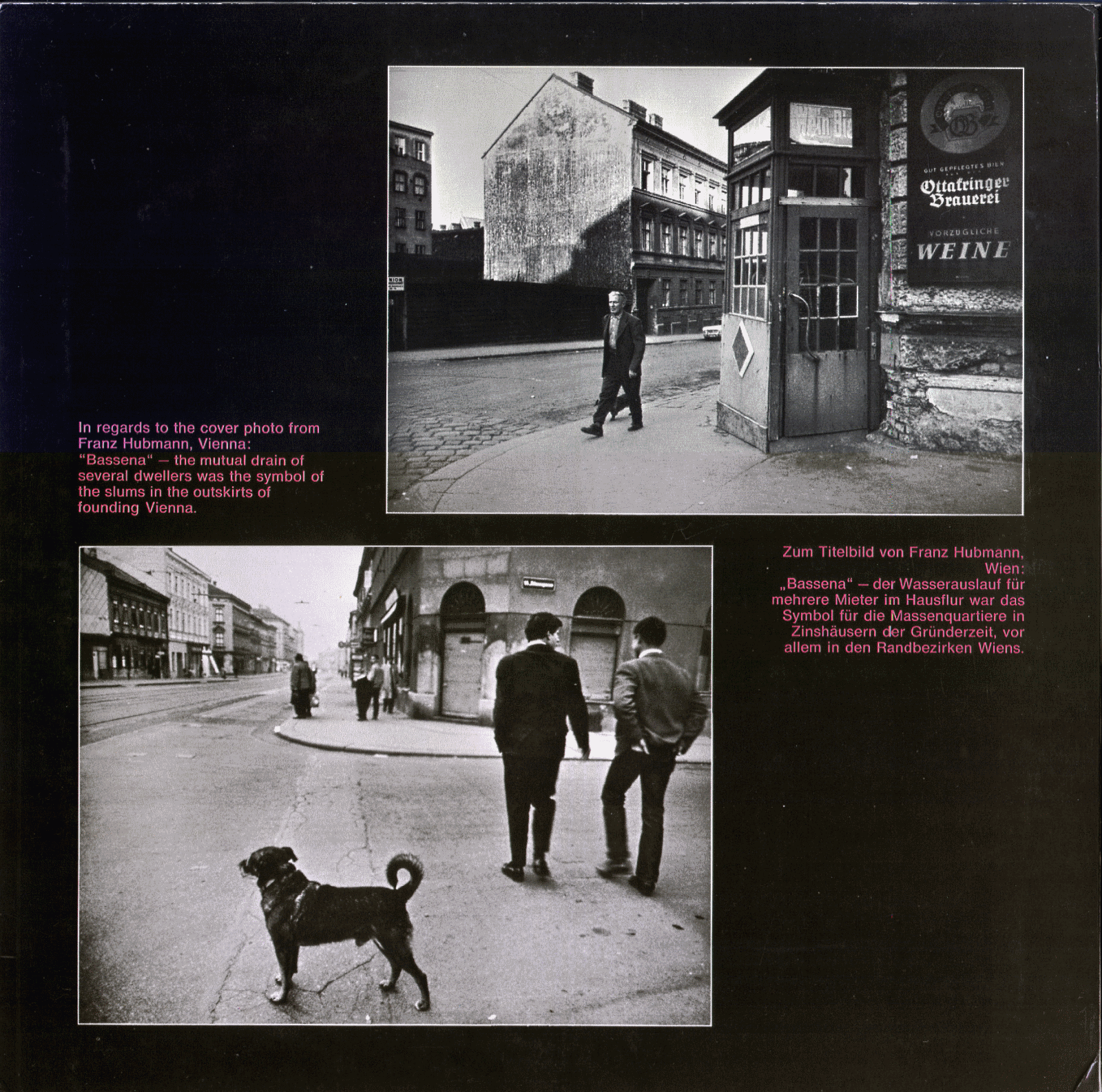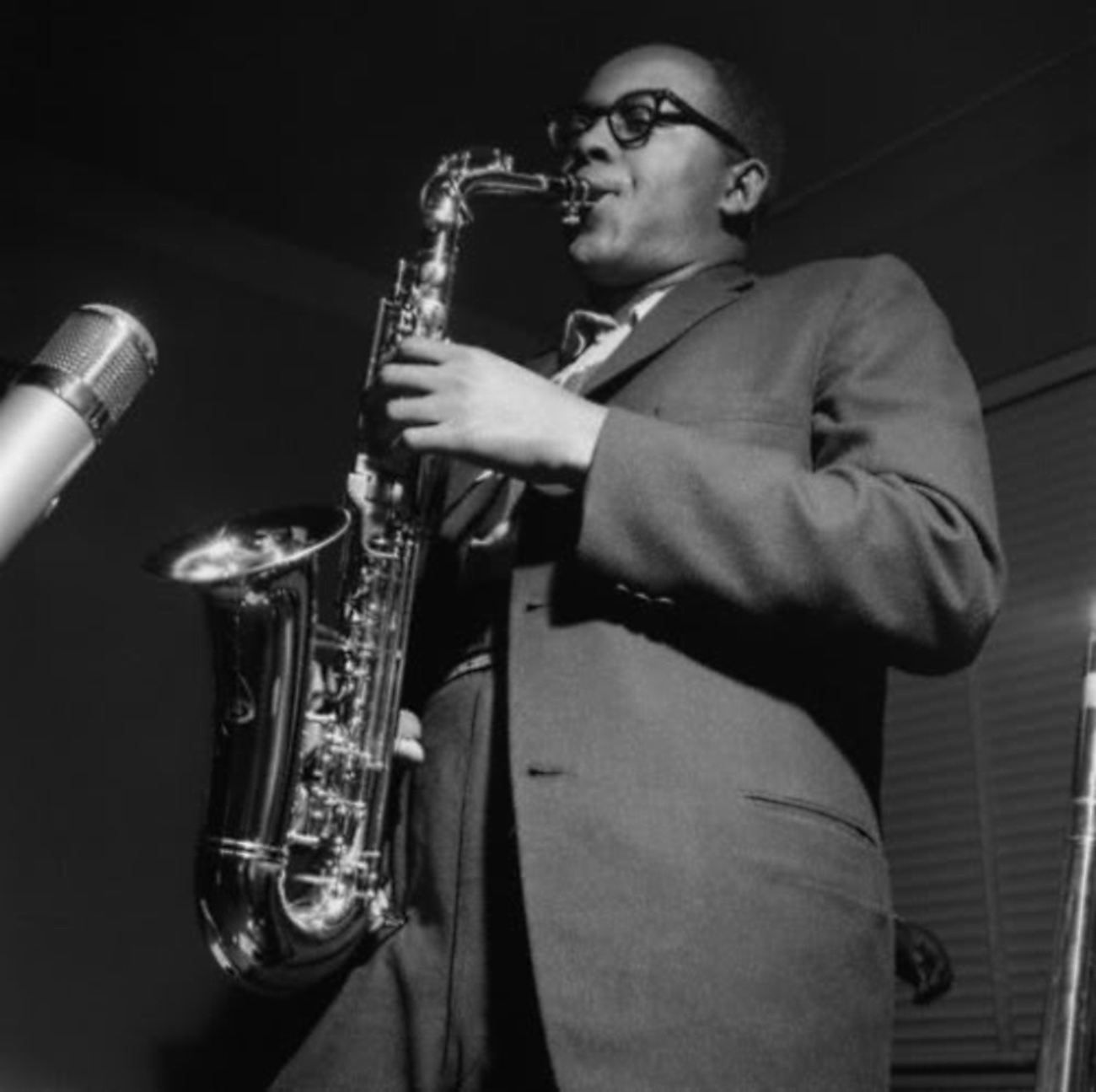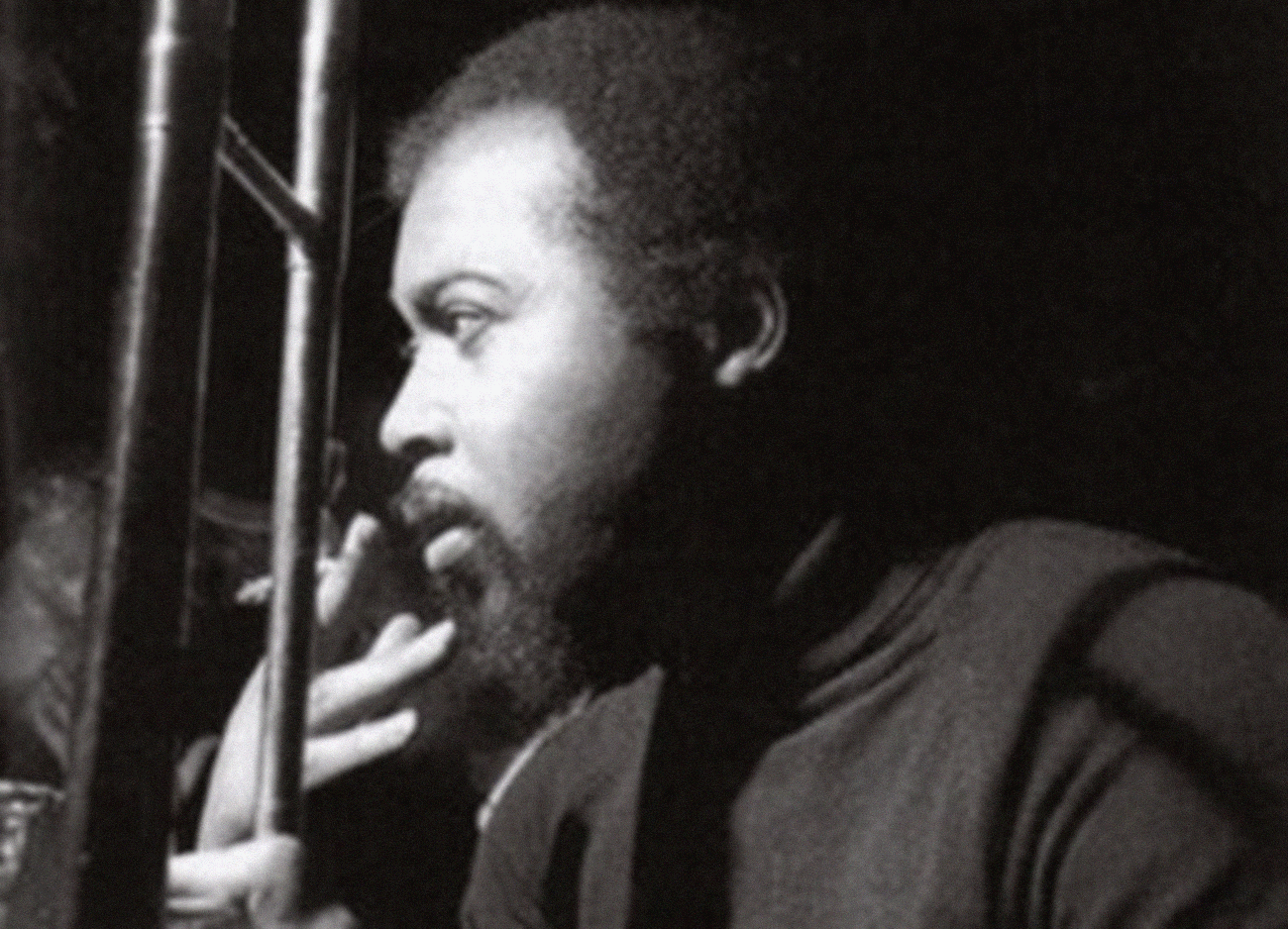Label: BYG Records – 529.205
Series: Double Actuel – 205
Format: 2 × Vinyl, LP, Compilation; Country: France - Released: 1971
Style: Free Jazz, Contemporary Jazz, Free Improvisation
Side A/B - Recorded In Paris 11. August 1969
Side C/D - Recorded In Paris 04. November 1969
Executive-producer – Claude Delcloo
Producer – Jean Georgakarakos, Jean-Luc Young
Two seminal sessions from avant soul trombonist Grachan Moncur III. Beautiful recordings.
New Africa (1969)
A1 - New Africa . . . 17:30
1st Movement: Queen Tamam
2nd Movement: New Africa
3rd Movement: Black Call
4th Movement: Ethiopian Market
A2 - Space Spy . . . 6:55
B1 - Exploration . . . 10:45
B2 - When . . . 12:00
Grachan Moncur III – trombone
Roscoe Mitchell – alto saxophone, saxophone [piccolo]
Archie Shepp – tenor saxophone (track: B2)
Dave Burrell – piano
Alan Silva – contrabass
Andrew Cyrille – drums, percussion
Aco Dei De Madrugada (One Morning I Waked Up Very Early) - 1969
C1 - Aco Dei De Madrugada (Traditional Bresilian) . . . 7:02
C2 - Ponte Io (Traditional Bresilian) . . . 6:46
D1 - Osmosis . . . 9:25
D2 - Tiny Temper . . . 5:28
Grachan Moncur III – trombone
Fernando Martins – piano, vocals
Beb Guérin – contrabass
Nelson Serra De Castro – drums, percussion
Grachan Moncur III
In 1969 Grachan Moncur III - jazz trombonist and composer - recorded two albums for the legendary French free jazz record label BYG: "New Africa" and "One Morning I Woke Up Very Early (Aco Dei De Madrugada)".
Moncur had come to France via Algiers, where he had played at the First Pan-African Cultural Festival. This Festival, which focused on Black African ethnic identity politics, had been held in Algeria from the 21st of July to the 1st of August 1969 by the new-fled Organization of African Unity. Moncur had come to the Festival together with Archie Shepp, with whom he had been playing since 1967 (i.a. on 'Life At The Donaueschingen Music Festival' and 'The Way Ahead') and with whom he would remain closely associated in further years (on 'Things Have Got To Change' and 'Kwanza'). Besides Moncur, Shepp brought with him cornet player Clifton Thornton, pianist Dave Burrell, bass player Alan Silva, and avant drummer Sunny Murray.
At the Festival, the whole group was invited to record in Paris by BYG Actuel's Jean Georgakarakos and Jean-Luc Young, and record they did: in a very short time span, working in ever-changing constellations, they created scores of beautiful free jazz records. "New Africa" was recorded on august 11th 1969, only ten days after the end of the Festival; "One Morning I Woke Up Very Early (Aco Dei De Madrugada)" was recorded only a little later, on september 10th and november 4th 1969.
But the jazz corpus created by those invited to record by BYG Actuel - though one of the most enticing on record - was marred by greed: to this day, BYG's mainmen Bisceglia, Young and Georgakarakos have apparently not paid any royalties to the artists involved. The financial problems this created for Moncur initiated a downward spiral, which was worsened by health problems. The result was that Moncur was able to record only rarely after the early 1970's, apparently became quite depressed, and didn't even merit a personal entry in the 7th (2004) edition of "The Pinguin Guide To Jazz On CD".
It is ironic that where a Festival (the First Pan-African Cultural Festival) provided the main impetus for BYG Records, another festival proved to be it's undoing. BYG Records organized a festival together with the countercultural magazine Actuel called 'Le Festival Actuel'. It was planned to take place from October 24th to 27th 1969 in Paris. However, the French authorities denied the organizers the necessary permits, fearing that either a Woodstock-like chaos or a repetition of the may 1968 student riots might ensue. This forced the organizers to move the entire Festival at a very late stage to Belgium, to a place called Amougies (or Amengijs in Flemish) which is near the French-Belgium border. The Festival had a very ambitious line-up, featuring Pink Floyd, Captain Beefheart, Soft Machine and Ten Years After. Also, much of BYG Records roster of Free Jazz performers participated; Grachan Moncur III appeared on Saturday night, together with Don Cherry, saxophonist Arthur Jones and pianist Joachim Kurt Kuhn. Frank Zappa was master of ceremonies at the Festival. Though an audience of 15-20,000 attended the Festival, the financial strain it caused was too much of a burden for BYG Records, which finally went bankrupt in the early seventies.
Bisceglia went on to become a Jazz photographer; Jean Georgakarakos founded Celluloid Records; and Jean-Luc Young founded the record label Charly Records in France in 1974 and moved operations to England in 1975. Living up to his reputation for shady deals, Young ran into legal trouble due to copyright infringement in 2000 while still working for Charly Records.
The trombone - Moncur's instrument - has held a particular fascination for me ever since I saw drone metal band Earth perform live, Steve Moore - who has roots in Free Jazz - providing beautiful trombone gravitas to Earth's haunted Americana. But Moncur's trombone playing is light years removed from Moore's drones: his style is firmly rooted in Jazz tradition.
Moncur's music is not Free Jazz of the chaotic and noisy, Merzbow kind; and it is also devoid of the cheap quasi-mystical exoticism which can spoil Indian/Jazz-fusion-type Free Jazz. Notwithstanding the influence of Shepp's ethnopolitical protest music, both albums present a rather lyrical style of Free Jazz, elegant rather than intransigent, poetic rather than acerbic, a mélange rather than a hotchpotch. Moncur comes across as a good-natured progressive who chooses to explore both the heartlands and the borders of the Jazz tradition, rather than as a revolutionary firebrand who aims to scorch the earth of that tradition.
But that does not mean that Moncur's music lacks passion - on the contrary!
'New Africa' features Roscoe Mitchell (alto sax), Dave Burrell (piano), Alan Silva (bass) and Andrew Cyrille (drums). It opens with the eponymous seventeen-and-a-half minute suite, which consists of four movements. Over the course of these movements, the relaxed, steady bass work by Silva binds together the energetic performances of the other musicians. The drums and the piano on the one hand and the sax and the trombone on the other maneuver around each other in benevolent aerobatic dog-fights. In 'Space Spy' Dave Burrell provides a suspenseful piano tune that gives the track a tense feel appropriate to it's title: that of a Free Jazz afro-futurist espionage thriller. The third track ('Exploration') is the 'Free-est' of all. It is thoroughly informed by Alan Silva's musical style: spiritually ecstatic, with an interplay of instruments that is as writhing as a mass of Cthulhoid tentacles. Archie Shepp appears on the fourth and final track of 'New Africa', where a self-confident (but never swaggering) swing provides the two musicians with a theater stage on which to perform their powerful art.
I'm also very fond of the second part of this double LP, the album "One Morning I Woke Up Very Early (Aco Dei De Madrugada)". It was recorded after 'Le Festival Actuel'. This album presents two songs which are interpretations of Brazilian traditionals: "Aco Dei De Madrugada" and "Ponte Lo"; and two originals: "Osmosis" and "Tiny Temper". On this recording, Moncur was assisted by French bass player Beb Guérin, Brazilian pianist Fernando Martins and Brazilian drummer Nelson Serra De Castro. More laid-back than 'New Africa', the Latin influence gives his music an immensely graceful swing. - Enjoy!
_ Text: Documents, By Valter
If you find it, buy this album!










































































